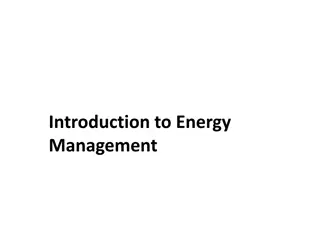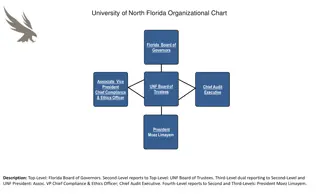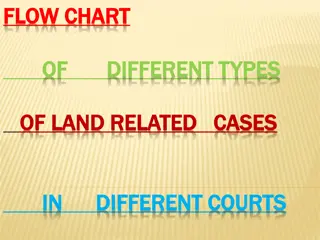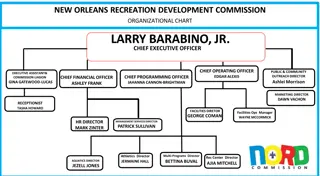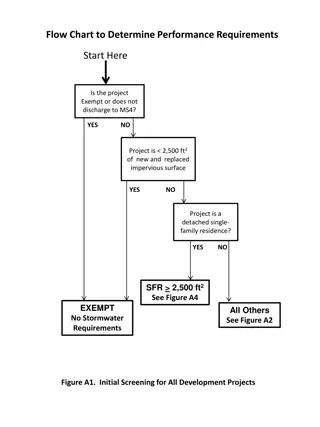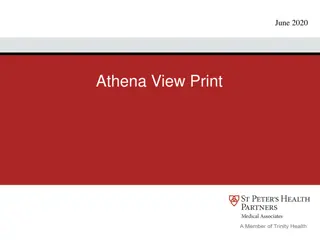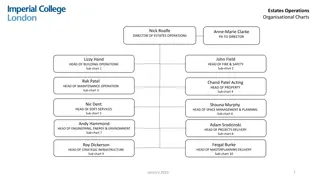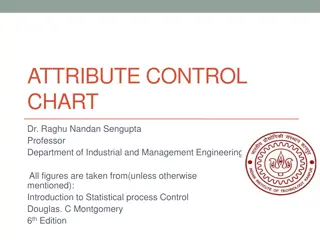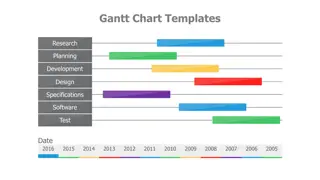Understanding Psychrometric Chart Processes in HVAC Systems
Heating, Ventilation, and Air Conditioning (HVAC) systems play a crucial role in providing indoor comfort. This article explores the significance of psychrometric charts in analyzing air conditioning processes, such as sensible heating, cooling, humidification, and dehumidification. An overview of important psychrometric processes and their implications in HVAC system design is provided, emphasizing the fundamental aspects of air treatment for optimal environmental conditions.
Download Presentation

Please find below an Image/Link to download the presentation.
The content on the website is provided AS IS for your information and personal use only. It may not be sold, licensed, or shared on other websites without obtaining consent from the author. Download presentation by click this link. If you encounter any issues during the download, it is possible that the publisher has removed the file from their server.
E N D
Presentation Transcript
Republic of Iraq Ministry of Higher Education and Scientific Research AL-Mustaqbal College University Air conditioning and refrigeration department AIR CONDITIONING AND REFREGRATION SYSTEM 2 PSYCHROMETRIC CHART PROCESSES 2ND STAGE Instructor name: Asmaa Khudhair Yakoop Educational qualification: master degree in mechanical engineering
Learning Objectives INTRODUCTION PROCESS OF PSYCHROMETRIC CHART SENSIBLE HEATING SENSIBLE COOLING COOLING AND HUMIDIFICATION HEATING AND HUMIDIFICATION COOLING AND DEHUMIDIFICATION HEATING AND DEHUMIDIFICATION HOME WORK REFRENCESS
Introduction Heating, ventilation, and air conditioning (HVAC) is the technology of indoor and vehicular environmental comfort. Its goal is to provide thermal comfort and acceptable indoor air quality. HVAC system design is a subdiscipline of mechanical engineering, based on the principles of thermodynamics, fluid mechanics and heat transfer. "Refrigeration" is sometimes added to the field's abbreviation, as HVAC&R or HVACR or "ventilation" is dropped, as in HACR (as in the designation of HACR-rated circuit breakers). HVAC is an important part of residential structures such as single family homes, apartment buildings, hotels and senior living facilities, medium to large industrial and office buildings such as skyscrapers and hospitals, vehicles such as cars, trains, airplanes, ships and submarines, and in marine environments, where safe and healthy building conditions are regulated with respect to temperature and humidity, using fresh air from outdoors.
Psychrometric chart A psychrometric chart graphically represents the thermodynamic properties of moist air. Standard psychrometric charts are bounded by the dry-bulb temperature line and the vapour pressure or humidity ratio .The left hand side of the psychrometric chart is bounded by the saturation line.
Important psychrometric processes In the design and analysis of air conditioning plants, the fundamental requirement is to identify the various processes being performed on air. Once identified, the processes can be analysed by applying the laws of conservation of mass and energy. All these processes can be plotted easily on a psychrometric chart. This is very useful for quick visualization and also for identifying the changes taking place in important properties such as temperature, humidity ratio, enthalpy etc. The important processes that air undergoes in a typical air conditioning plant are discussed below. 1- SENSIBLE COOLING 2- SENSIBLE HEATING 3- COOLING AND DEHUMIDIFICATION 4-HEATING AND HUMIDIFICATION 5-COOLING & HUMIDIFICATION 6- HEATING AND DE-HUMIDIFICATION
1. Sensible cooling: During this process, the moisture content of air remains constant but its temperature decreases as it flows over a cooling coil. For moisture content to remain constant, the surface of the cooling coil should be dry and its surface temperature should be greater than the dew point temperature of air. If the cooling coil is 100% effective, then the exit temperature of air will be equal to the coil temperature. However, in practice, the exit air temperature will be higher than the cooling coil temperature. Figure below shows the sensible cooling process O-A on a psychrometric chart.
2- Sensible Heating During this process, the moisture content of air remains constant and its temperature increases as it flows over a heating coil. The heat transfer rate during this process is given by: Qh = Ma (hB hO) = Ma.Cpm(TB TO) where Cpm is the humid specific heat ( 1.0216 kJ/kg dry air) and Ma is the mass flow rate of dry air (kg/s).
3- COOLING AND DEHUMIDIFICATION When moist air is cooled below its dew-point by bringing it in contact with a cold surface as shown, some of the water vapor in the air condenses and leaves the air stream as liquid, as a result both the temperature and humidity ratio of air decreases as shown. This is the process air undergoes in a typical air conditioning system. Although the actual process path will vary depending upon the type of cold surface, the surface temperature, and flow conditions, for simplicity the process line is assumed to be a straight line. The heat and mass transfer rates can be expressed in terms of the initial and final conditions by applying the conservation of mass and conservation of energy equations as given below: By applying mass balance for the water: ma.Wo = ma.Wc + mw By applying energy balance: ma .Ho = qt + mw .Hw + ma .Hc From the above two equations, the load on the cooling coil, qt is given by: qt = ma (ho hc) ma (wo wc)hw The 2nd term on the RHS of the above equation is normally small compared to the other terms, so it can be neglected. Hence, Qt = ma (ho hc) It can be observed that the cooling and de-humidification process involves both latent and sensible heat transfer processes, hence, the total, latent and sensible heat transfer rates (qt, ql and qs) can be written as:
By separating the total heat transfer rate from the cooling coil into sensible and latent heat transfer rates, a useful parameter called Sensible Heat Factor (SHF) is defined. SHF is defined as the ratio of sensible to total heat transfer rate, i.e.,SHF = Qs /Qt = Qs /(Qs + Ql )
4- HEATING AND HUMIDIFICATION During winter it is essential to heat and humidify the room air for comfort. This is normally done by first sensibly heating the air and then adding water vapour to the air stream through steam nozzles as shown in the figure. Mass balance of water vapor for the control volume yields the rate at which steam has to be added, i.e., mw: mw = ma (wD wO) where ma is the mass flow rate of dry air. From energy balance: Qh = ma (hD hO) mw.hw where Qh is the heat supplied through the heating coil and hw is the enthalpy of steam. Since this process also involves simultaneous heat and mass transfer, we can define a sensible heat factor for the process in a way similar to that of a cooling and dehumidification process.
5- COOLING & HUMIDIFICATION As the name implies, during this process, the air temperature drops and its humidity increases. As shown in the figure, this can be achieved by spraying cool water in the air stream. The temperature of water should be lower than the dry-bulb temperature of air but higher than its dew-point temperature to avoid condensation (tdpt < tw < to). It can be seen that during this process there is sensible heat transfer from air to water and latent heat transfer from water to air. Hence, the total heat transfer depends upon the water temperature. If the temperature of the water sprayed is equal to the wet bulb temperature of air, then the net transfer rate will be zero as the sensible heat transfer from air to water will be equal to latent heat transfer from water to air. If the water temperature is greater than WBT, then there will be a net heat transfer from water to air. If the water temperature is less than WBT, then the net heat transfer will be from air to water. Under a special case when the spray water is entirely recirculated and is neither heated nor cooled, the system is perfectly insulated and the make-up water is supplied at WBT, then at steady- state, the air undergoes an adiabatic saturation process, during which its WBT remains constant. This is the process of adiabatic saturation. The process of cooling and humidification is encountered in a wide variety of devices such as evaporative coolers, cooling towers etc.
6- HEATING AND DE-HUMIDIFICATION This process can be achieved by using a hygroscopic material, which absorbs or adsorbs the water vapor from the moisture. If this process is thermally isolated, then the enthalpy of air remains constant, as a result the temperature of air increases as its moisture content decreases. This hygroscopic material can be a solid or a liquid. In general, the absorption of water by the hygroscopic material is an exothermic reaction, as a result heat is released during this process, which is transferred to air and the enthalpy of air increases.
Heating and humidification WHAT IS HUMIDIFICATION PROCESS? The process in which the moisture or water vapor or humidity is added to the air without changing its dry bulb (DB) temperature is called as humidification process. This process is represented by a straight vertical line on the psychrometric chart starting from the initial value of relative humidity, extending upwards and ending at the final value of the relative humidity. In actual practice the pure humidification process is not possible, since the humidification is always accompanied by cooling or heating of the air. Humidification process along with cooling or heating is used in number of air conditioning applications. Let us see how these processes are obtained and how they are represented on the psychrometric chart.
HOME WORK I. REPRESENT SENSIBLE PROSESS ON PSYCHROMETRIC CHART IF (DBT=25C) AND (WBT=15) AT COIL ENTERING AND (DBT=35) AT OUTLET II. REPRESENT PROCESS OF COOLING AND HUMIDIFICATION ON PSYCHROMETRIC CHART IF (DBT=30,Q=60%) AND LEAVE AT (Q=80%, DBT=15) III. WHY THE DIRECTION OF SENSIBLE HEATING ON RIGHT SIDE OF PSYCHROMETRIC CHART? IV. WHY THE DIRECTION OF SENSIBLE COOLING ON LEFT SIDE OF PSYCHROMETRIC CHART?







